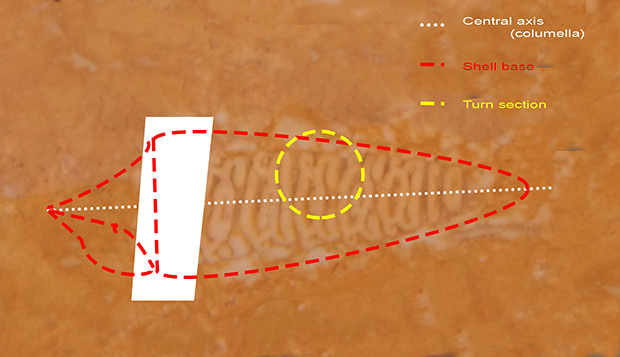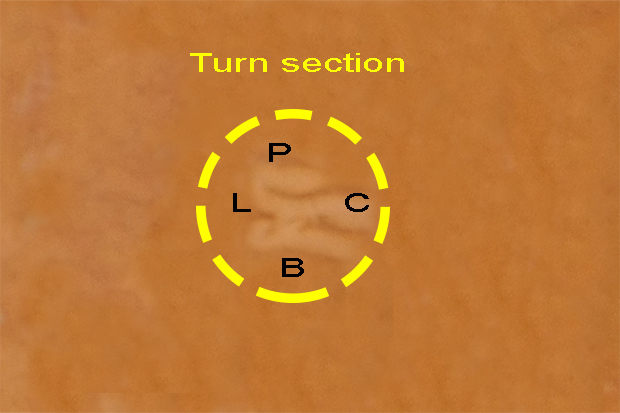Multiptyxis

At Fonte da Juventude or Menina Nua you can see several examples of Multiptyxis. These are on a slab that forms the base of the fountain and is under water.
And what are Multiptyxis? They are fossils whose name results from the combination of two words, one Latin (multi that means a lot) and another Greek (ptyxis that means fold). So multiptyxis means "many folds". If we look closely at the axial cut of the shell, we can see these many folds. These folds are inside the turns of the shell and are remembered in the scientific name.
Multiptyxis are an extinct genus of marine gastropod mollusks. Gastropods of this genus appeared approximately in the early Jurassic, about 200 million years ago (200 Myr), and became extinct - that is, disappeared from the face of the Earth - at the end of the Cretaceous, about 65 Myr, in the same when the dinosaurs disappeared.
Gastropods of the genus Multiptyxis, like those of the genus Nerinea (family Nerineidae), lived in very shallow marine environments, with warm waters and normal marine salinity. Populated tropical marine lagoons, protected from the direct influence of the open ocean, which formed behind reefs or banks of rudists.
At the time these gastropods lived in Portugal, and when the sediments that originated the limestone in which we now find their fossils were deposited, there were still dinosaurs. Multiptyxis gastropods lived in shallow marine lagoons, behind the banks of rudists or associated with them, and dinosaurs in continental, terrestrial environments.
The multiptyxis fossil to be observed can be understood by the image above and where a section of the winding turn can be highlighted (figure below). The sinuous design that is highlighted in a lighter color on the slab corresponds to the filling of the inside of the loops by another different sediment. This winding is according to an axis, the columella, and which forms the curved characteristics of the shell. In the back section, where the folds are, these are marked by letter: P parietal fold, L lateral fold, B basal fold and C columellar fold. The lighter color was the void around the shell. The pleats are part of the shell and are made of the same carbonated material.

Fossils categories
Fossils can be divided into two categories, fossilized body parts (bones, claws, teeth, skin, embryos, etc.) and fossilized traces, called ichnofossils (which are footprints, nests, dung, toothmarks, etc.), that record the movements and behaviors of living beings.
Body fossils: type of fossil that occurs when some part of the living being is preserved. They are considered direct evidence of living beings. For example, fossils of teeth, shells, leaves, shells, logs, etc. They are the remains of living beings.
Ichnofossils: type of fossil that occurs only with indirect evidence of living beings, that is, they result from their biological activities. For example, stromatolites, footprint fossils, bite marks, eggs (egg shells), excrements (coprolites), urinary secretions (uroliths), gastrils, tunnels, galleries, etc. They are vestiges of the passage of living beings.
ref: wikipedia
|